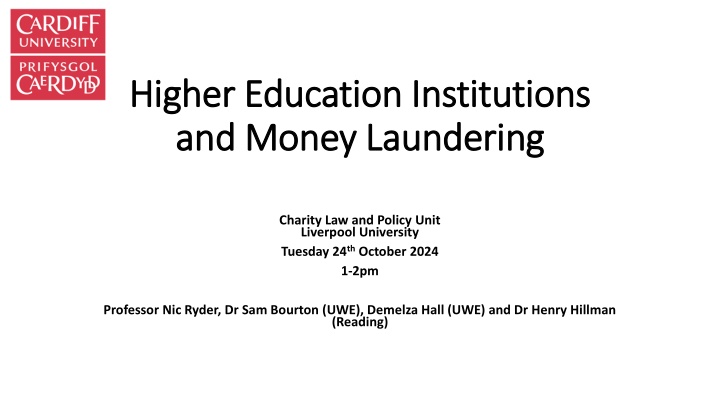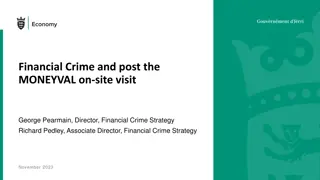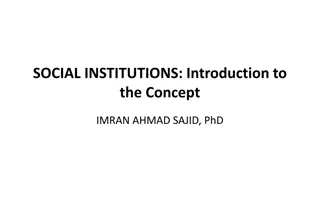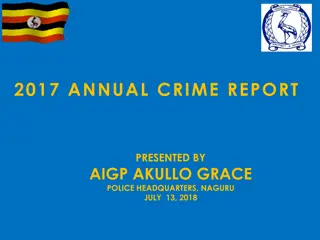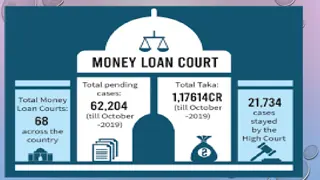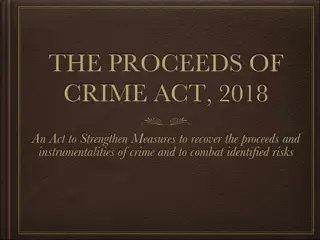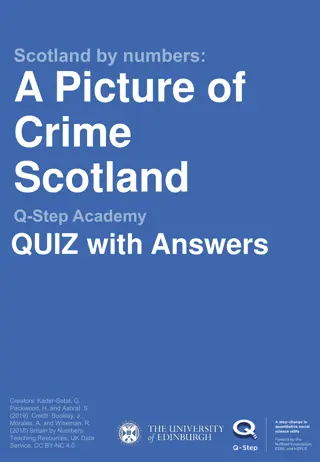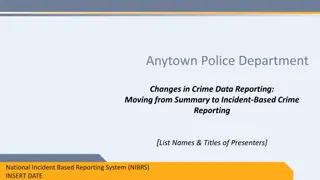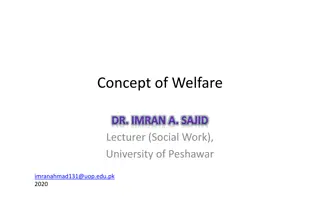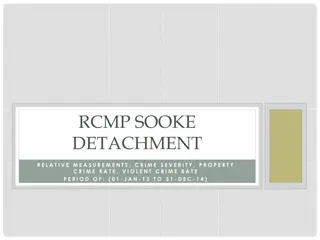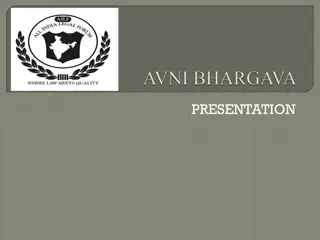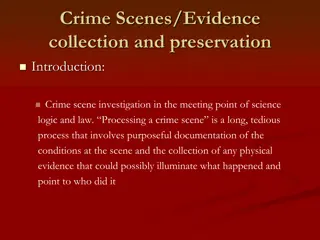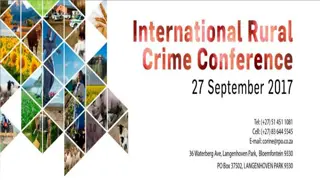Financial Crime Risks in Higher Education Institutions
Research conducted at Liverpool University explores money laundering risks in universities, including cash payments and unexplained wealth channeled into the education sector. Learn about the application of Anti-Money Laundering and Counter-Terrorism Financing regulations and measures taken to address these risks.
Uploaded on Mar 03, 2025 | 2 Views
Download Presentation

Please find below an Image/Link to download the presentation.
The content on the website is provided AS IS for your information and personal use only. It may not be sold, licensed, or shared on other websites without obtaining consent from the author.If you encounter any issues during the download, it is possible that the publisher has removed the file from their server.
You are allowed to download the files provided on this website for personal or commercial use, subject to the condition that they are used lawfully. All files are the property of their respective owners.
The content on the website is provided AS IS for your information and personal use only. It may not be sold, licensed, or shared on other websites without obtaining consent from the author.
E N D
Presentation Transcript
Higher Education Institutions Higher Education Institutions and Money Laundering and Money Laundering Charity Law and Policy Unit Liverpool University Tuesday 24thOctober 2024 1-2pm Professor Nic Ryder, Dr Sam Bourton (UWE), Demelza Hall (UWE) and Dr Henry Hillman (Reading)
Funding/Research Funding/Research This work has been conducted under funding provided by InnovateUK (Activist Financing, Organised Crime and Fraud and Suspicious Activity Reports) and Synalogik. Ryder, N, Bourton, S, Hall, D and Hillman, H. Higher Education Institutions and the Anti-Money Laundering and Counter-Terrorism Financing Regulations (2023) Criminal Law Review, 9, 560- 580
Introduction Introduction Research Questions and Methodology Financial Crime Risks Higher Education Institutions (HEIs) and their Students Application of Anti-Money Laundering and Counter Terrorism Financing (AML/CTF) Legislation to HEIs Measures Currently Taken by HEIs to address AML/CTF risks
Research Questions and Methodology Research Questions and Methodology Central Research Question: What money laundering risks are universities and their students exposed to, and how do universities currently address these risks? Socio-legal methodology: Research strategy designed to shed light on the operation of law in society Methods: Literature Review used to identify the risks to which HEIs and their students are exposed Doctrinal analysis used to identify the law relating to AML/CTF and its application to HEIs Freedom of Information (FOI) requests used to identify the measures currently taken by HEIs to address AML/CTF risks. FOI requests sent to 120 HEIs. Responses received from 110 HEIs (91.67% response rate) However, some HEIs declined to answer some or all questions based on exemptions in the FOI Act 2000 and FOI (Scotland) Act 2002
Financial Crime Risks Financial Crime Risks Higher Education Institutions (HEIs) Higher Education Institutions (HEIs) Accepted collectively by 49 universities in cash payments over a five year period (Times, 2021) 3m Troika Laundromat, British schools, colleges and education consultants received more than 3million from account holders featured in the leak (Guardian, 2019) 52m Using collective laundromat data, Transparency International identified 492 payments worth more than 4.1million to 177 different [educational] institutions , including 59 transactions to universities worth 515,198 (2019) 4.1m Unexplained wealth channelled by West African PEPs alone into the UK education sector exceeds 30million annually (Carnegie Endowment for International Peace, 2021) 30m ??? Private schools in the UK received payments from the Russian Laundromat, where $22billion was transferred from Russia to Europe using shell companies and banks in Latvia and Moldova (Independent, 2014)
Financial Crime Risks Financial Crime Risks Students The National Crime Agency notes cash is frequently deposited into mule accounts held by students as the first part of the [money laundering process] (NCA, 2019a) Students 26% Increase in the number of 21 year olds acting as money mules from 2017 to 2018. In 2018, total number of money mules increased to 40,139 (CIFAS, 2018) In February 2019, the NCA placed account freezing orders on 95 UK bank accounts containing an estimated 3.6m suspected to be the proceeds of crime, which were held mainly by overseas students studying in the UK (NCA, 2019b)
Financial Crime Risks Financial Crime Risks Students Students of students perceive themselves to be vulnerable to money mule scams, 61% 32% likely to consider accepting a suspicious opportunity to earn money, 29% would allow their account to be used by someone else (Nationwide, 2021) of students had been targeted by fraudsters 76% (Independent, 2021)
Financial Crime Risks Financial Crime Risks Students Increasing numbers of students have been charged with money laundering because they have acted as a money mule: Students Name of Student(s) Age at Time of Court Hearing Amount Laundered Nature of Predicate Offence Abdi Mohamed and Nyanjura Biseko Both 22 Over 10,000 Book-binding company defrauded of 37,986 Gengqi Wang 28 2.5m (student paid 300) 16million money laundering operation involving Belfast Bank Karine Lewani 22 5,430 Invoice payment scam Peredigha Amasuomo 21 Over 6,000 Unclear - fraudulent payments transferred from a bank in Puerto Rico Sydney Amyamwu 20 56,461 Unclear David Sheehan 23 100,000 Solicitor defrauded of 100,000 for client property purchase Jack Hughes 22 15,000 Polish company defrauded of 15,000 Michael Fakinle 21 Largest single transaction 71,892.41 Hackers accessed email accounts of victims and caused them to transfer money to Fakinle Mohammed Ismail Khan and Bilal Mohammed Afzal 21 and 28 At least 10,000 64,500 stolen from elderly flood victim
Financial Crime Risks Financial Crime Risks Students Students 2. Money transferred into the accounts of student money mules 1. Two fraudsters convinced elderly flood victim to transfer 64,500 into dummy accounts 3. Bilal Mohammed Afzal received 10,000 4. Additional funds were received by Mohammed Ismail Khan, who converted 6,500 into euros Only around 20,000 recovered for victim 5. 5,000 transferred to student account of Nikhil Yauvan Reedye 6. Converted to euros (Manchester Evening News, 2019)
Financial Crime Risks Financial Crime Risks Students RUSI took the view that terrorists have been able to secure funds from a wide range of sources including defrauding student loan companies (RUSI, 2017) Students Examples: Yahya Rashid, fraudulently obtained a place at Middlesex University, used his student loan to fund travel for himself and associates to Turkey. He was convicted of two counts of preparing acts of terrorism (R v. Yahya Rashid [2016] EWCA Crim 568) Salman Abedi, may have used student loans to commit the terrorist attack in the Manchester Arena in 2017 (European Commission, 2017, Telegraph 2017, Coroners Inquest, 2022, Ryder 2023)
AML/CTF Legislation AML/CTF Legislation Part 7 of the Proceeds of Crime Act 2002 (POCA), ss. 327-340 Concealing the proceeds of criminal conduct (s.327) Assisting another to retain the benefits of criminal conduct (s.328) Acquisition, use and possession of the proceeds of crime (s.329) Failure to report suspicious transactions, regulated sector (ss.330-332) Terrorism Act 2000, (TACT) ss. 14-31 Raising, receiving or providing funds for the purpose of terrorism (s.15) Using or possessing funds for the purpose of terrorism (s.16) Becoming involved in an arrangement which makes funds available for the purposes of terrorism (s.17) Facilitating the laundering of terrorist property and money (s.18) Failure to report suspicious transactions, regulated sector (s.21A) Money Laundering, Terrorist Financing and Transfer of Funds (Information on the Payer) Regulations 2017 Preventative measures, regulated sector
AML/CTF Legislation AML/CTF Legislation Applicability to HEIs The Money Laundering Regulations 2017 only apply to the regulated sector, as defined in Regulation 8(2) Applicability to HEIs HEIs are not part of the regulated sector Are HEIs considered a High-Value Dealer? Term is defined in Regulation 14 as a firm or sole trader who by way of business trades in goods ( ), when the trader makes or receives, in respect of any transaction, a payment or payments in cash of at least 10,000 euros in total Only 2 out of 110 HEIs considered themselves to be High Value Dealers Accordingly, the Money Laundering Regulations 2017 do not apply to HEIs
AML/CTF Legislation AML/CTF Legislation Applicability to HEIs Offence of failing to report suspicions of money laundering under POCA also only applies to the regulated sector Applicability to HEIs However, the primary money laundering and terrorism financing offences are of universal application A defence is provided to the primary money laundering and terrorism financing offences if the person concerned makes an authorised disclosure to a constable, a customs officer or a nominated officer, who must in turn report the matter to the NCA Accordingly, it is important for universities to appoint a nominated officer and to establish procedures for staff handling payments to submit SARs, if only to provide employees with a defence to money laundering and terrorism financing
Measures Currently Taken by HEIs to Address AML/CTF Risks Measures Currently Taken by HEIs to Address AML/CTF Risks This section of the presentation examines the answers provided by 110 HEIs in the UK in response to a questionnaire submitted as a FOI request Some universities provided a full response to every question, whereas others declined to answer some or all questions based on exemptions in the FOI Act 2000 and FOI (Scotland) Act 2002 All of the responses have been anonymised by the researchers
Measures Currently Taken by HEIs to Address AML/CTF Risks Measures Currently Taken by HEIs to Address AML/CTF Risks Awareness of AML Legislation and AML Policies All HEIs that responded to the relevant question had an awareness of AML legislation, including POCA 2002 and the Money Laundering Regulations 2017 74 HEIs, or over 67%, have a specific AML policy in place. Only 5 HEIs, or just over 4.5%, do not appear to include AML as part of any policy and do not appear to have plans to implement an AML policy in the near future Does Your University Have An Anti-Money Laundering Policy? 50 Number of HEIs 40 30 20 10 0 Refused No - In Progress No No Further Detail No Part of Other Policies Yes - Yes - Yes - Not Published Published Internally Published Externally
Measures Currently Taken by HEIs to Address AML/CTF Risks Measures Currently Taken by HEIs to Address AML/CTF Risks Staff Training 84 HEIs, or over 76%, noted that they provided some form of AML training and guidance to staff Are University Staff Provided With Anti- Money Laundering Training? 21 HEIs, or 19.1%, stated that they do not provide any internal AML training Refused No - Total Of these respondents, 5 HEIs suggested that they were in the progress of developing AML training for their staff, while others suggested that training was provided by external organisations, such as accounting bodies and financial institutions Yes - Total Yes - Unclear Yes - All Staff Yes - Specific Categories of Staff 0 10 20 30 40 50 60 70 80 90 Number of HEIs
Measures Currently Taken by HEIs to Address AML/CTF Risks Measures Currently Taken by HEIs to Address AML/CTF Risks Student Guidance 76 HEIs, or around 69%, provide at least some form of guidance to students Are Students Provided with Guidance on Financial Crime and/or Organised Crime, Including the Risks and Dangers Posed to Students? Some HEIs reported making information available on an ad hoc basis, while others routinely provided resources and information to students online Refused Yes No 9, 8% Some HEIs reported providing guidance to particularly at risk, or vulnerable, students, while others provided guidance to all students as part of induction talks or as part of their course 25, 23% 25 HEIs, or over 22%, do not provide any guidance to their students 76, 69%
Measures Currently Taken by HEIs to Address AML/CTF Risks Measures Currently Taken by HEIs to Address AML/CTF Risks Cash Payments 79 HEIs, or over 71%, do not accept cash payments for tuition fees or accommodation Accordingly, HEIs appear to be less willing to accept cash payments than they were a few years ago, with the Times reporting that 49 HEIs accepted 52million in cash payments from students for fees over the past five years (Times, 2021) Nonetheless, 22 HEIs, or approximately 20%, are willing to accept cash payments. Some of these HEIs have a limit on cash transactions, the lowest being 500, whereas others do not impose any limit on the amount that can be paid in cash 39 HEIs provided information relating to the total value of cash payments received in 2019/20. In total, the 39 HEIs received over 12million in cash payments in 2019/20, with 3 HEIs receiving cash payments totalling more than 1million and 3 HEIs receiving 977,944, 975,891 and 824,000 respectively
Measures Currently Taken by HEIs to Address AML/CTF Risks Measures Currently Taken by HEIs to Address AML/CTF Risks Suspicious Activity Reports The NCA has revealed that a low proportion of SARs are submitted by the education sector; In 2017/18, the entire education sector submitted 25 SARs to the NCA, followed by 24 SARs in 2018/19 and 34 SARs in 2019/20 (NCA 2018; 2019; 2020) *Unless otherwise stated, responses reflect SARs submitted at any time No. of SARs No. of HEIs <5 1 0 53 1 6 However, our research revealed that the low number of SARs recorded by the NCA were submitted by a small number of HEIs 2 4 2 (in 5 years) 1 3 2 At the time of responding to the FOI request, 53 HEIs, or over 48%, had not submitted a single SAR to the NCA. 4 2 10 1 18 (in 12 months) 1 77 1 Refused 38
Measures Currently Taken by HEIs to Address AML/CTF Risks Measures Currently Taken by HEIs to Address AML/CTF Risks Third-Party Payments Page considers third-party payments to pose a significant money laundering risk to HEIs, particularly payments from legal entities, owing to the propensity of money launderers and tax evaders to spend their proceeds of crime on tuition fees (Page 2021) Do You Accept Third Party Payments on Behalf of International Students? Refused Unclear No Yes 10, 9% 1, 1% In addition, the NCA notes forms of bribes such as the payment of school fees, are increasingly being seen (NCA, 2019) 17, 15% Of the 82 HEIs, or over 74%, willing to accept third-party payments, 43 noted that they do not carry out additional checks 82, 75%
Measures Currently Taken by HEIs to Address AML/CTF Risks Measures Currently Taken by HEIs to Address AML/CTF Risks Use of Technology 43 HEIs, or over 39%, do not use data- related technology to combat financial crime risks and threats Do You Use Any Data Related Technology to Combat Risk and Threat Regarding the Protection of Students/Candidates and Third-Party Anti-Fraud Measures? Unclear answer Refused 34 HEIs, or over 30%, stated that they do use data-related technology to combat risks and threats Seeking clarification Yes Through a named provider Yes Handled by payment provider Yes No further (or inadequate) detail Only 4 HEIs stated that they currently use a named provider for data-related technology No Mentioned anti-phishing, anti-malware, or No Handled by a payment provider/platform No No further (or inadequate) detail These providers were Flywire, Sophos, Microsoft DLP and Mimecast Yes - Total No - Total 0 5 10 15 20 Number of HEIs 25 30 35 40 45 50
Conclusion Conclusion Universities and their students are exposed to significant financial crime risks There is awareness within the HEI sector of AML legislation, but there is a disparity among universities regarding how effectively it is implemented Significant weaknesses include: Approximately 19% of HEIs do not currently provide any internal AML training Many HEIs have ceased the acceptance of cash payments, but 20% are still willing to do so Most universities do not submit any SARs to the NCA 22% of HEIs do not provide any guidance to their students on the risks posed to them by financial crime and organised crime The exclusion of universities from the AML framework presently leaves HEIs, their employees, and their students, at risk of money laundering, terrorism financing and criminal liability
Recommendations Recommendations To reduce the risks to which HEIs and their students are exposed, the following recommendations are made: Include HEIs within the scope of the Money Laundering Regulations 2017 AML/CTF and fraud training should be provided for appropriate staff across the HEI sector HEIs should proactively submit SARs Cash payments for tuition fees and accommodation should be prohibited, or at least severely restricted Enhanced due diligence should be undertaken on payments made by third parties Include HEIs within the membership of JMLIT. Allow HEIs to participate in the exchange of information via information gateways created by Criminal Finances Act 2017 Information should be provided to students on the risks and dangers posed to students in regards to financial crime and organised crime
